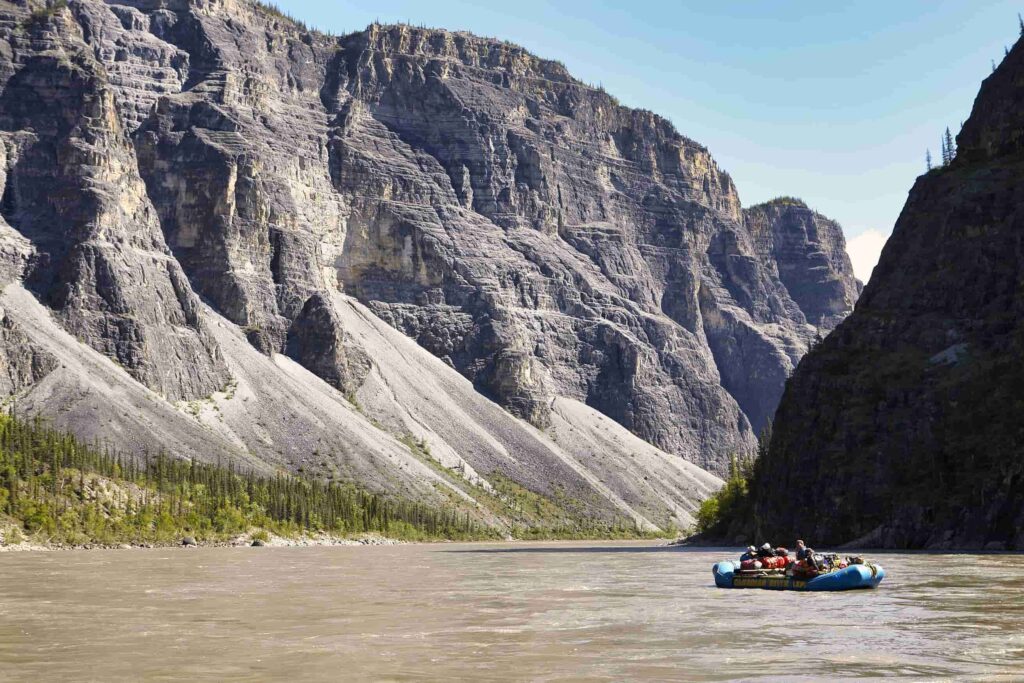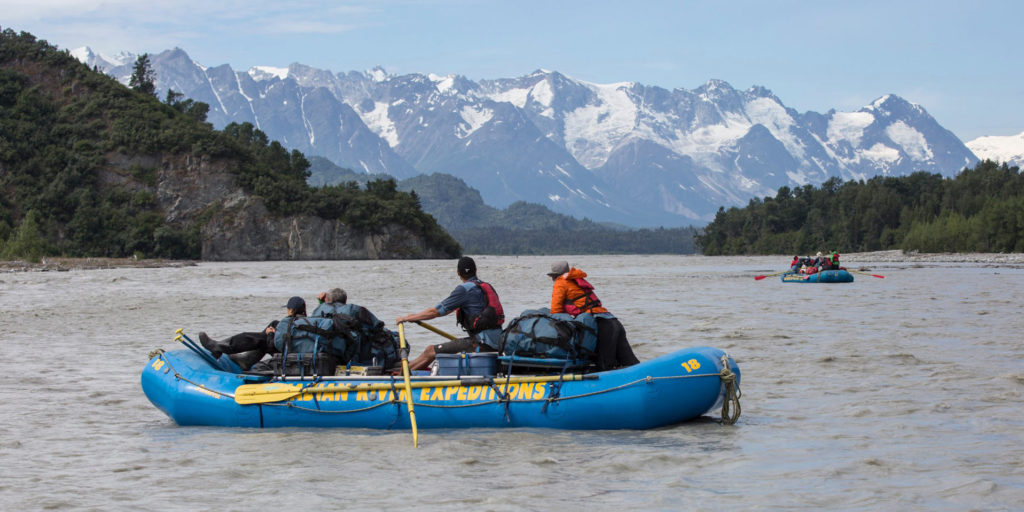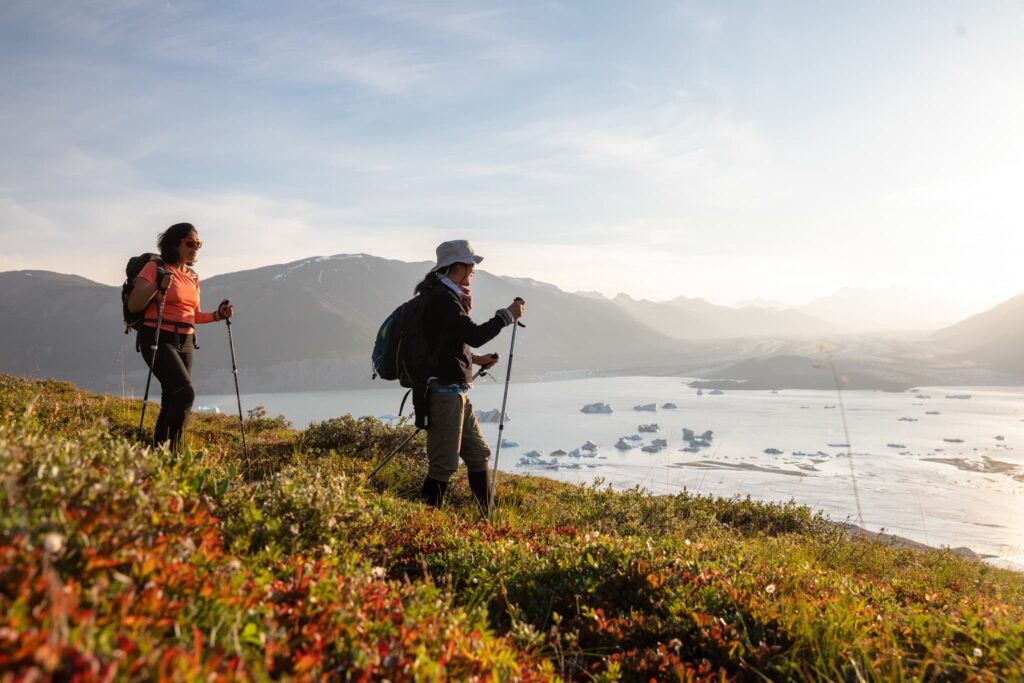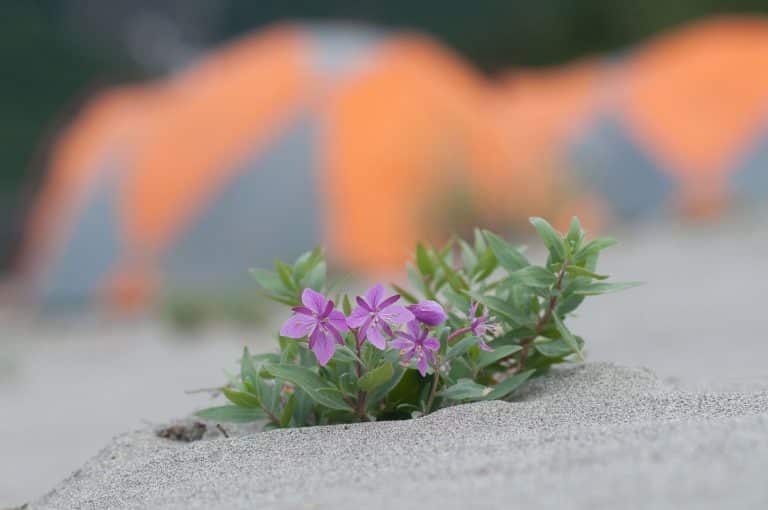Łíídlı Kųę – the place where two rivers come together.
This is the Dene Zhatie name for Fort Simpson, the village at the confluence of the Liard and Mackenzie Rivers. Traditionally used as a seasonal gathering place by First Nations peoples, archaeological evidence suggests that the Dehcho region has been inhabited since 3000 BC.
Today, Łíídlı Kųę is the gateway to the iconic Nahanni National Park and the start and end point for our Nahanni raft journeys.
While direct flights are available from Yellowknife, a road trip from points further south is an amazing way to ease into the North and experience the evolving landscapes and dynamic communities of the Northwest Territories.
Road tripping is an adventure in itself; from rich boreal forests, cascading waterfalls and breathtaking river deltas, you can travel at a pace which allows you to fully immerse yourself in the untamed beauty of the North.
Driving also offers the chance to experience some of the territory’s vibrant communities, learn about their cultures and contribute to local economies through utilising their services.
Growing up on these rivers, owners Joel and Dana Hibbard certainly know the journey North well! Here we recount a few of their favourite reasons to road trip and places en route to help you plan your own four wheeled adventure.
Northern Scenes
One of the highlights of any drive through the NWT is the abundant wildlife the territory is home to. It’s a great way to spot iconic northern species including bison, bears, moose and caribou, and the lack of traffic means you can easily pull over to have quality viewing time.
As summer edges towards fall, the nights darken once again and August travellers are able to enjoy one of Nature’s most exquisite natural spectacles: the night sky.
The NWT boasts up to 240 nights of Northern Lights every year, with mid August to September being a prime time to see them. Without the light pollution from more southerly cities, the territory offers world class stargazing and breathtaking Aurora displays.
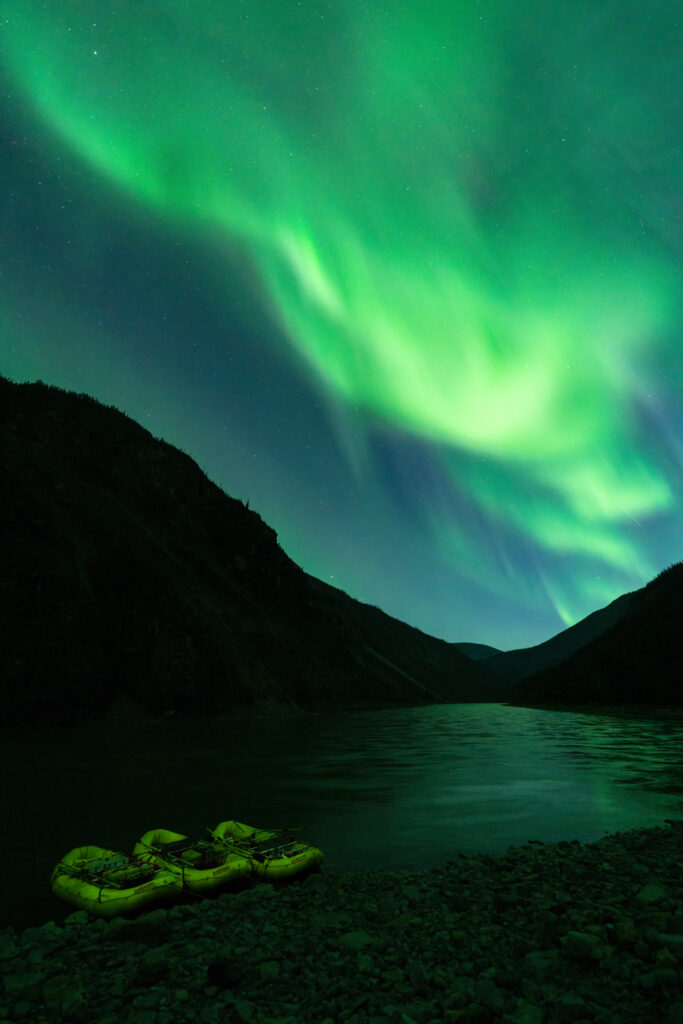
The Rockies
From Calgary or Edmonton, you will pass by one of the world’s great mountain ranges, the Rockies. If starting from Calgary, you can take the Trans-Canada Highway West until Lake Louise. Here you follow Icefields Parkway, a 232 km stretch of highway linking Lake Louise with Jasper.
Cited by Condé Nast Traveler as one of the top drives in the world, the Parkway takes you past Banff and Jasper National Parks, through some of Alberta’s world-renowned mountain valleys and ice fields. If you have time, consider spending a night or two en route to explore some of the fantastic hiking and wildlife viewing opportunities.
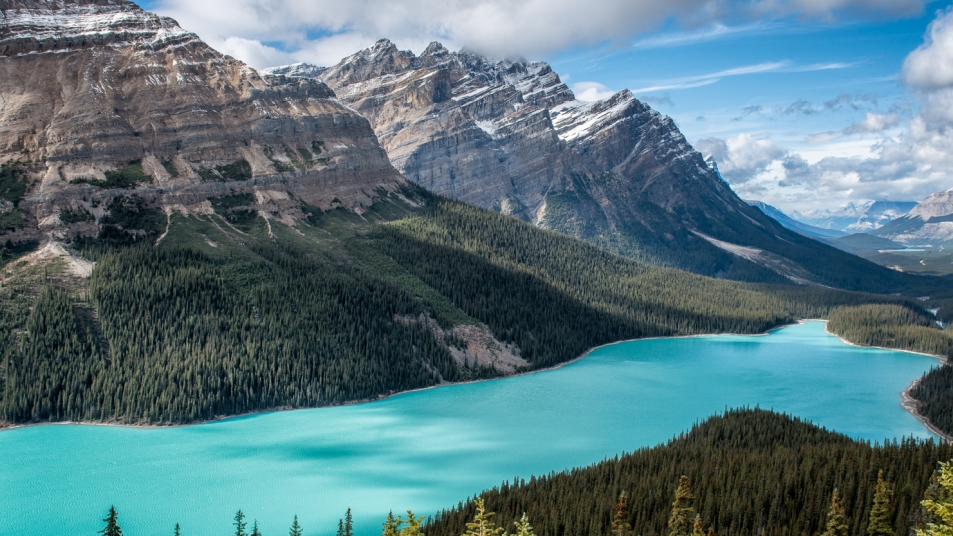
If Edmonton is where you begin your travels, head West on Highway 16 before exiting at Entrance and passing by the northern end of the Rockies.
You will pass through Grande Cache, a rural hamlet with breathtaking views of mountain peaks, lakes and river valleys. Labyrinth Park is a good opportunity to stretch your legs, with its mediaeval-style stone maze for visitors to stroll and soak up the surroundings.
Sulphur Gates, situated a few kilometres from the highway, is the dramatic confluence of the Sulphur and Smoky Rivers. The park features a short trail to take you up to the impressive rock formations, as well as a day use area and small campground.
Keep heading northwards on AB 40. The Philip J. Currie Dinosaur Museum just past Grande Prairie makes for a fascinating pause for those with a penchant for palaeontology.
Once you reach Dawson Creek, BC, you’ll keep skirting the eastern edge of the Rockies and embark upon the start of the famous Alaska Highway!
If you have time for a detour, Liard River Hot Springs Provincial Park and Northern Rocky Mountains Park are located about a three hour drive west of Fort Nelson along the Alaska Highway. The Parks offer a chance to soak and relax or warm up your hiking legs on some of the excellent trails while surrounding yourself with northern BC’s pristine nature.
As the southern city lights and rush of traffic fade behind you, you will feel yourself being enveloped in the serene wildness of our northern landscapes, beckoning you further to experience the uncharted adventure which lies ahead.
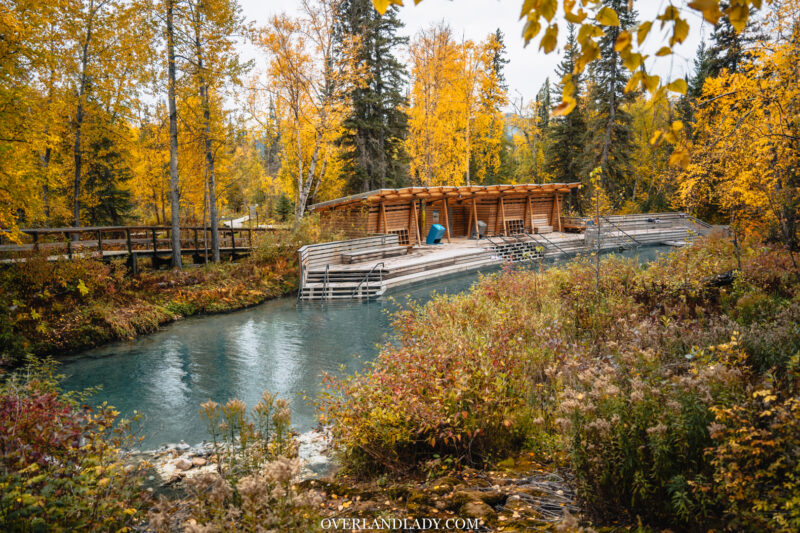
Fort Liard
The first community you will encounter after crossing the 69th parallel into the NWT is Fort Liard. A scenic community located on the banks of the Liard River, Fort Liard is an excellent place to stop and refuel – just a short detour off the Liard Trail.
Blackstone Territorial Park
As you head north towards Blackstone, keep your eyes peeled for wildlife. Bison, bears and caribou are often seen on this stretch of road. Blackstone Territorial Park itself offers you the first scenic mountain views of the lower Nahanni watershed, as well as non-powered campsites for those wanting to stay overnight, water, showers and fire wood / campfire facilities.
Łíídlı Kųę / Fort Simpson
Upon arriving at Łíídlı Kųę / Fort Simpson, you will be greeted by views of the lush banks of the mighty Mackenzie and Liard Rivers, historic buildings and a warm community. A day spent getting to know this historic village will give a great deal of context to the journey you are about to embark upon!
The community hosts several festivals and offers cultural experiences to immerse yourself in. The Łíídlı Kųę Tourism website has great info on what to see and do.
Homeward Bound
After returning from the Nahanni River and bidding farewell to your fellow river travellers, it’s time to start the southern-bound leg of your road trip.
If you didn’t get your fill of cascading water on the Nahanni – fear not! The western Dehco and southeastern NWT are brimming with impressive waterfalls to admire.
Heading east along the Mackenzie Highway (NT 1), you will pass Sambaa Deh Falls. Whilst most visitors just stop to photograph the main falls, there is a beautiful network of trails that can be explored too, leading to the lesser visited Coral Falls 1.5 km upstream – so named for the Devonian era coral fossils found in the area (some dating to 400 million years ago!). There is also a non-powered campground which makes a scenic pit stop overnight.
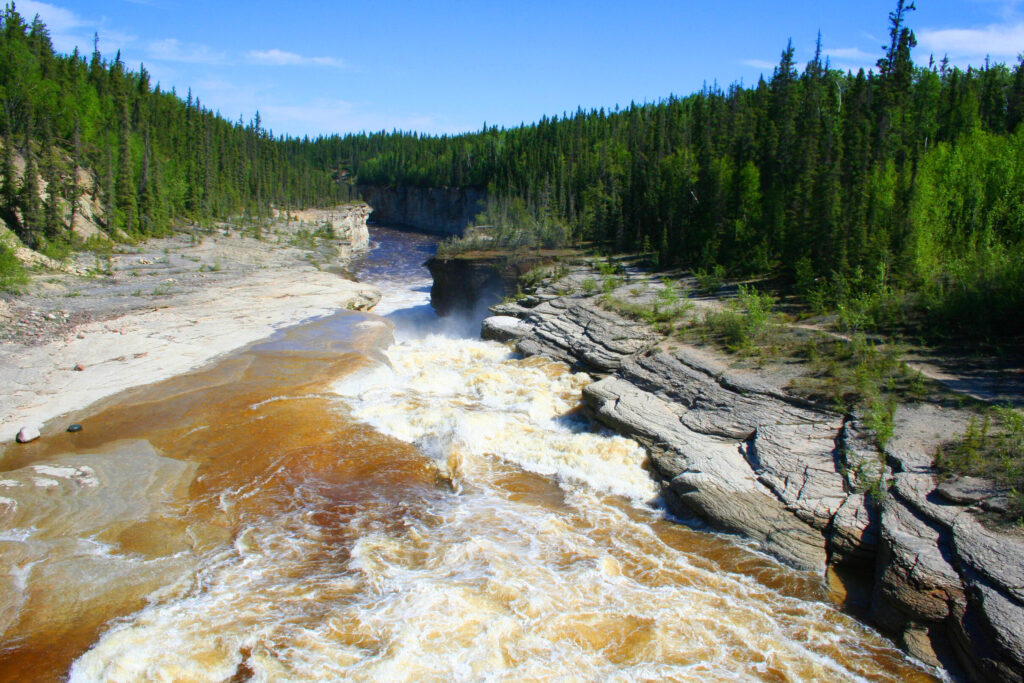
Lady Evelyn Falls lie further along the highway, just outside the village of Kakisa. The 17-metre high crescent shaped falls are formed by the Kakisa River hurdling an ancient coral reef. There are excellent swimming and fishing spots; northern pike, pickerel and Arctic grayling can all be caught here. The territorial park also has powered campsites, water, a kitchen shelter and firewood for those wanting to stay overnight in this tranquil setting.
Before you turn for your southward trajectory, a small detour North will take you to Hay River, a town situated on the shores of North America’s deepest lake – Great Slave Lake!
Boasting some of the continent’s finest fishing, there are several local operators who will take you out to wet your line on mouthwatering lake trout, pike or whitefish. These local delicacies can also be sampled at Fisherman’s Wharf, a market operating every Saturday throughout the summer and serving up legendary fried fish!
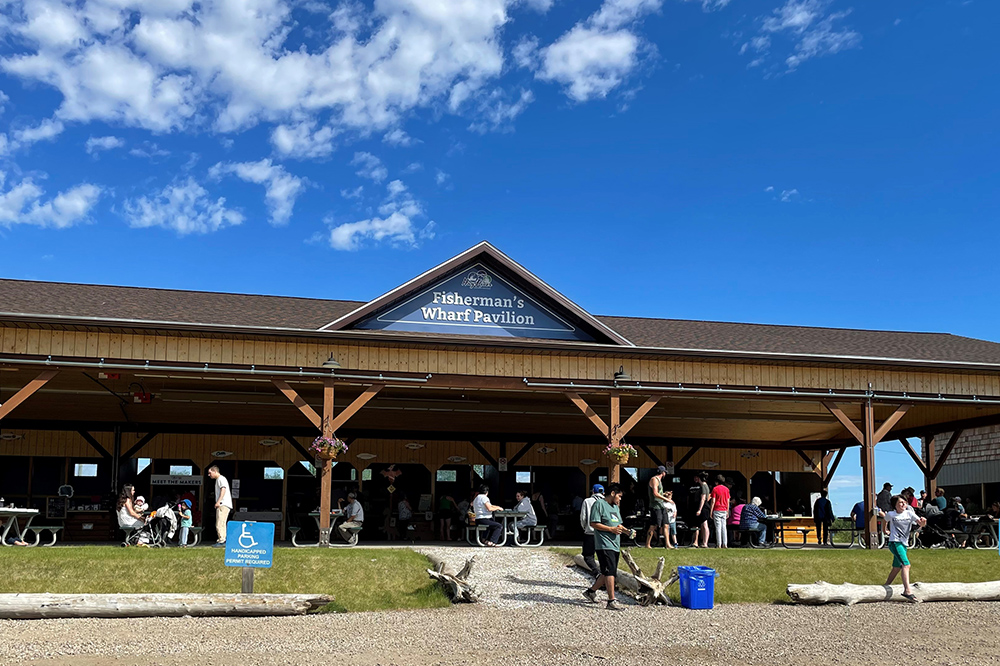
Wood Buffalo Falls Route
For those with a little more time, follow NT Highway 5 to the sweeping plains of Wood Buffalo National Park. Bigger than Switzerland, the park is the fifth largest in the world and home to exquisite biodiversity, granting it status as a UNESCO World Heritage Site.
The lush boreal forests and expansive Peace-Athabasca freshwater delta make for excellent viewing of species such as moose, bears and wood bison.
One of the highlights of the park are The Salt Plains, a 200 square kilometre expanse of salt flats created by the evaporation of ancient sea water. On a hot day the surface shimmers ethereally, beckoning you to take a barefoot stroll to experience first hand the vastness of this otherworldly desert.
The Plains have traditionally been used by Indigenous peoples to harvest salt, and are used by many species in the area as a salt lick to ingest minerals. Visitors may even see the rare Whooping Crane, North America’s tallest bird which migrates 4000 kilometres twice yearly between Texas and the NWT!
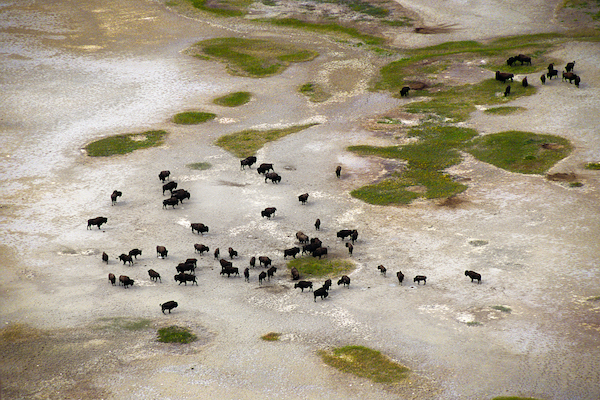
Free guided tours of Wood Buffalo National Park are available from Parks Canada: https://parks.canada.ca/pn-np/nt/woodbuffalo/activ/guidee-guided
If you are passing through at the end of August, you may coincide your visit with the annual Thebacha and Wood Buffalo Dark Sky Festival. Miles from any light pollution, visitors can enjoy phenomenal stargazing and aurora viewing, as well as talks and educational workshops in the world’s largest dark sky preserve!
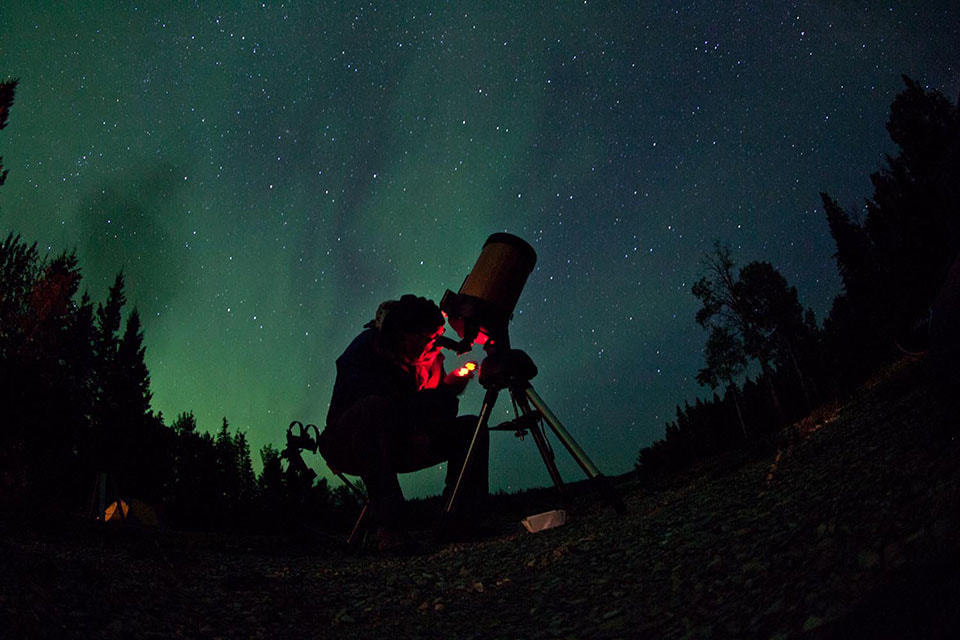
Straight Shot South
For the most direct route back to Edmonton or Calgary, head south at the town of Enterprise and follow NWT Highway 1 / AB Highway 35.
This will take you past Twin Falls Gorge Territorial Park. The two falls – Alexandra and Louise – are a spiritually significant site for the Dene people, who believe them to be the resting place of spirits. The different areas of the park are connected by a beautiful and dramatic trail, and feature fantastic day use and camping amenities.
As you continue south, crossing the border through the 60th Parallel Territorial Park, boreal forests and rolling hills eventually melt into the vast fields of the Prairies, welcoming you back home with a truckload of tales to share with your friends and family from your trip of a lifetime!
A Few Tips for Driving in the North
- Watch out for wildlife!
- Animals in the North are more abundant and less accustomed to humans and traffic than their southerly cousins. Take care whilst driving on highways and backroads alike – you never know when a moose or bear will step out into the road!
- Road conditions
- Many of the roads in the North are gravel, so ensure your tires are up for the job and you have a spare or two along with a tire change kit. Winter arrives early here, so expect the unexpected – frosty mornings are not unknown in fall. A quick check in with the NWT Highways department will update you with current conditions.
- Fuel and supplies
- Gas stations aren’t as common as they are in southern metropolitan areas, so plan your route and ensure you have enough gas to last you the way. Consider bringing jerry cans of spare fuel, especially as gas stations might not be open 24/7.
- Snacks are an essential part of any road trip! But having some spare calories is important in the case of breakdown too. Roadside assistance isn’t fast in the North and most of the drive will be out of cell service. Consider bringing an inReach / satellite communication device and getting breakdown cover (CAA provides cover across North America).
- Road signs
- For those coming from the states, speed limits are written in kilometres per hour in Canada. Familiarise yourself with the NWT’s road signs and laws.
As always, don’t hesitate to reach out if you have any questions. Our Expedition Planning Team are more than happy to help!


